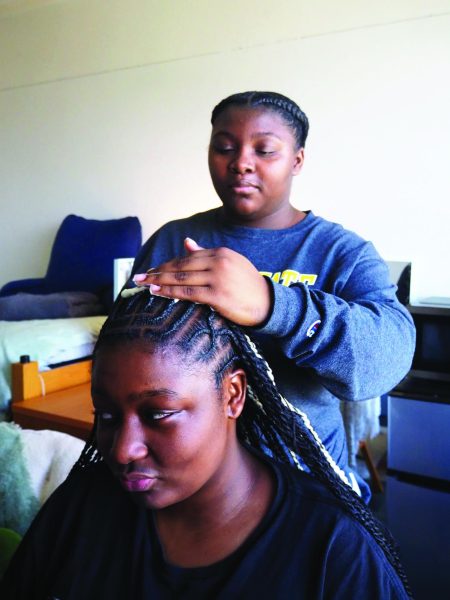Fulfilling a 100-year promise, students to take a trip to Hugh Glass Monument
March 30, 2023
“…And to you, dear unborn Scribe of the twenty-first century, is entrusted the duty of preparing the celebration of the second centennial of the heroic achievement of Glass,” John Neihardt, in the July 30, 1923 edition of The Goldenrod, wrote. “On the evening of August 1, 2023, you are to imitate us by striking fire from flint and steel, as Glass did in 1923, as do we in 1923.”
Along with a team of students, Professor Joseph Weixelman plans to fulfill the wishes set in place by Neihardt, as part of his summer class HIS 444- Neihardt and the American West.
This five-week course will focus on Neihardt, his understanding of the American West, Black Elk, Hugh Glass and our roles in the course of history.
“We’ll study the artistic view and the scientific view,” Weixelman said. “Which is the best history? That’s the question we are going to ask.”
Hugh Glass worked as a fur trapper in the early 1800s. His most famous journey, and the one Neihardt wrote about in his around 100-page poem entitled “The Song of Hugh Glass,” occurred in 1823. After enduring a mauling by a grizzly bear outside of what we now know as Lemmon, South Dakota, Glass had to fend for himself after members of his trapping party left him for dead.
He then went on to crawl 200 to 300 miles across the Old West to Fort Kiowa. His bravery, resourcefulness and perseverance inspired and captivated Neihardt, WSC Professor Lisa Nelson said.
From this inspiration, sparked an idea for another journey. Though not as strenuous as Glass’ crawl, Neihardt and his honor students’ 1923 trip from Wayne to South Dakota was no easy feat, Weixelman explained.
The group took a Model T, and because only a few roads existed at the time, followed fence lines to the Grand River. Along the way, their car became stuck in the mud and needed to be dug out. They also had to mix their own cement using a mixer donated by the man who owned the land.
Now, 100 years later, Weixelman plans to take the same trip with his students. The group will hopefully camp, Weixelman said, but will stay in a hotel if needed. To fund the trip, the Honors Club intends to ask for allocations from Student Senate.
Weixelman and Nelson also believe Neihardt and his party placed a time capsule within the monument and hope to put together a time capsule with the class outlining life in 2023. Students will write letters to students 100 years from now.
Weixelman also plans on taking his class to the Black Hills and Wounded Knee.
To gain a comprehensive view of Glass’ journey, Weixelman will have his students read Neihardt’s poem along with a historian’s account of the events that unfolded. The first will offer an artistic view of history, focusing on themes and lessons learned, while the second will unpack the details of Glass’ life.
The class will also dive into another of Neihardt’s greatest works, “Black Elk Speaks,” exploring the Lakota tribe, the war and Neihardt’s relationship with Lakota Leader Black Elk.
“Those are the three key sites I wish to visit with the class because we’re talking about visions,” Weixelman said. “We’re talking about travel, the future, poetry and science. We’re going to touch the future. And I hope this summer’s class becomes a life changing experience for everyone who takes it.”
Registration for Summer 2023 classes has opened for WSC students. Anyone interested can sign up using Wildcats Online.









